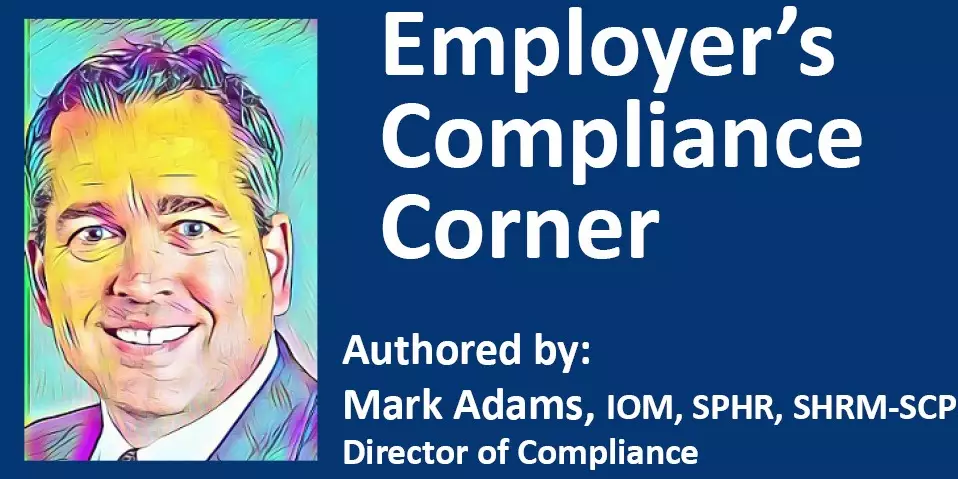
The value of a diverse organization has been espoused by many. According to McKinsey & Company*, a gender-diverse organization’s financial performance can be up to 15% better than other organizations.
Yet, when President Trump issued an executive order on September 22nd that prohibited federal contractors and subcontractors from conducting certain forms of training, it left many to wonder “Is Diversity training dead?”
First off, the Order does not apply to all employers. Rather, it covers employers with federal contracts or subcontracts greater than $10,000 that are not otherwise exempt (covered contractors will be required to incorporate a clause in their subcontracts to ensure that subcontractors take on these conditions as well) that are entered into on or after November 21, 2020 (i.e. 60 days after the Order’s effective date). So, for those of you who are not the beneficiary of such federal contracts, these Orders have no bearing upon you That said, businesses who find themselves covered by the Order’s provisions should take a closer look at what kinds of diversity training are and are not supported.
Diversity training, by one definition, is “any program designed to facilitate positive intergroup interaction, reduce prejudice and discrimination, and generally teach individuals who are different from others how to work together effectively.”**
To this end, there may be numerous internal and external dimensions to that training that may be considered – dimensions that also help shape both our personality and our behavior; including but not limited to income, educational background, personal habits, work experiences, family experiences and more.
However, the Order does not seek to cast aside all of these dimensions. As a quick primer, the Order prohibits any form of training which instills:
“…in its employees any form of race or sex stereotyping or any form of race or sex scapegoating, including the concepts that (a) one race or sex is inherently superior to another race or sex; (b) an individual, by virtue of his or her race or sex, is inherently racist, sexist, or oppressive, whether consciously or unconsciously; (c) an individual should be discriminated against or receive adverse treatment solely or partly because of his or her race or sex; (d) members of one race or sex cannot and should not attempt to treat others without respect to race or sex; (e) an individual’s moral character is necessarily determined by his or her race or sex; (f) an individual, by virtue of his or her race or sex, bears responsibility for actions committed in the past by other members of the same race or sex; (g) any individual should feel discomfort, guilt, anguish, or any other form of psychological distress on account of his or her race or sex; or (h) meritocracy or traits such as a hard work ethic are racist or sexist, or were created by a particular race to oppress another race.”
To put it another way, it prohibits any form of training that has the operative effect of trying to stereotype employee behavior as attributable to their race or sex.
For some diversity training programs, race and sex have likewise been dimensions that have been built into them. Will the hollowing out of these subjects undermine the effectiveness of the remaining content? At the very least, the Order will require covered employers to navigate a different path to address its diversity training goals and objectives. For companies who want to fully embrace and aspire to cultivate not only a diverse population but also foster a culture rooted in diversity and workplace respect, it means recrafting the training message …to shift away from discussions on sex and race as an underlying factor regarding how we interact with each other towards discussing it from a broader socio-economic perspective and those life experiences that have shaped our views and behaviors. Covered employers will likewise need to carefully work with their training providers (and internally as well) to ensure that their initiatives do not run afoul of what indeed is prohibited.
The Office of Federal Contract Compliance Programs (OFCCP) will be setting up a hotline geared towards fielding complaints and launching corresponding investigations. And, the penalties for noncompliance can be steep. According to the Order – which can be found here – violators could potentially face temporary or permanent debarment from participating in future federal contracts.
Further steps on the Order’s implementation are forthcoming; including the Director of OFCCP publishing a request for information seeking feedback from Federal contractors, Federal subcontractors, and employees of Federal contractors and subcontractors regarding the training, workshops, or similar programming provided to employees, and for federal agencies with grant programs to explore whether to impose similar measures as a condition to awarding certain grants.
Sources | * Hunt, Yee, Prince, Fyle “Delivering Through Diversity”, McKinsey & Company, January 18, 2018 report. ** Lindsey, Alex; King, Eden; Hebl, Michelle; Levine, Noah “The Impact of Method, Motivation, and Empathy on Diversity Training Effectiveness” Journal of Business and Psychology, September 2015.
Thank you for viewing this article in EANE’s Employer’s Compliance Corner Blog, Authored by our Director of Compliance, Mark Adams. Please visit again soon to stay up to date on today’s compliance updates and best practices for employers.
For more details about this executive order and its’ impact on your business, join us on November 17th for our webinar: The Future of Diversity & Inclusion Programs under Executive Order 13950.